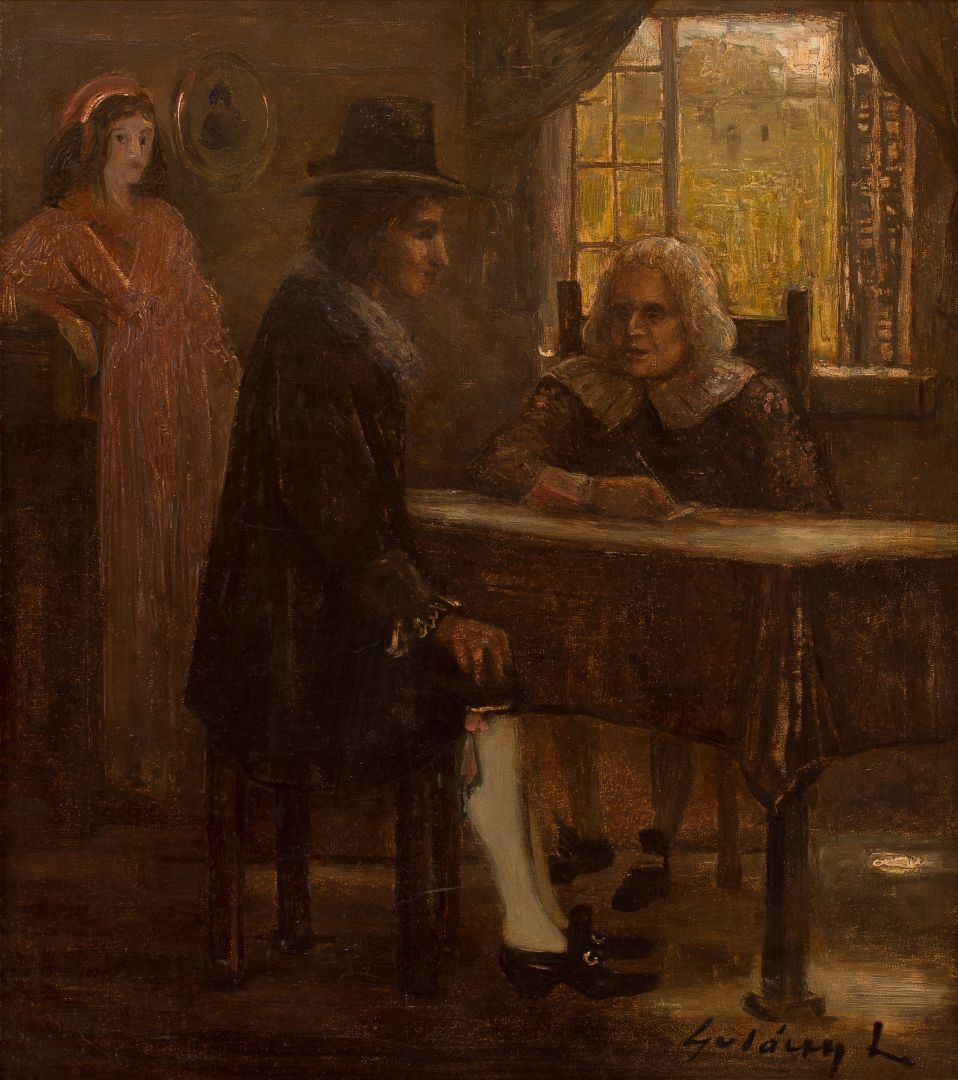Hall 3
Oliver Proposes Marriage to Olivia
GULÁCSY, LAJOS (1882–1932)
Oliver Proposes to Olivia, c. 1909
oil on canvas, 58x51 cm; marking at the bottom right: Gulácsy L
Fine Arts Collection, Inv. No.: 76.24.
The sensitive nature of Lajos Gulácsy made it difficult for him to fit in with his own era. He yearned for a more gallant and playful world, an environment that matched his interpretation of the Renaissance humanism, Rococo and Biedermeier periods. He created his own artistic microcosm based on his literary and art experiences.
His Rococo inspired works were clearly influenced by the French painter Watteau, whose significance was acknowledged by him in a publication. The inspiration behind the theme of the enigmatic artwork presented here was identified by the author of the 1979 Gulácsy monograph, Béla Szíj. The painting was inspired by the novel of the 18th century English author Oliver Goldsmith titled The Vicar of Wakefield, which received three Hungarian editions during 1831-1858. Touched by the emotional story, the painter immortalized the joy of two loving hearts coming together in the ceremonious event of a proposal. We see Oliver sitting at the table, tense, enduring the questions of Olivia’s father. Olivia herself watches them from the background, hoping to get his father’s approval on their marriage. We see a sunlit cityscape through the window, serving as a glimpse into the cheerful future of the two.
This painting is made even more special by the fact that it was one of Gulácsy’s favourites; he even made a copy of it so that he could keep the original. The variation of the composition was found at the 2017 auction of the Kieselbach Gallery. We consider the copy held at Miskolc to be the original due to its more fleshed-out details. The painting was acquired by the Herman Ottó Museum through a conscious collection expansion effort in 1976, from the 41st auction of the Second-hand Store Company.
Andrea Pirint
